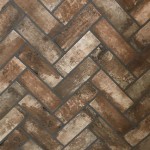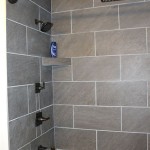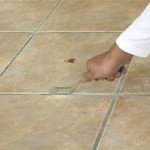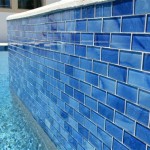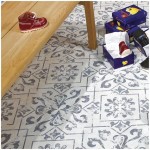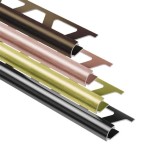Can You Put Backsplash Tile On Painted Drywall? A Comprehensive Guide
Installing a backsplash is a common way to enhance the aesthetic appeal and functionality of kitchens and bathrooms. Many homeowners wonder whether it is permissible to install tile directly onto painted drywall. The answer is multifaceted and depends on several factors, including the type of paint, the condition of the drywall, and the specific tiling materials being used. This article will comprehensively explore the considerations involved in tiling over painted drywall, offering practical advice and outlining best practices for a successful installation.
Drywall, also known as gypsum board, is a widely used building material for interior walls and ceilings. It consists of a gypsum core sandwiched between two layers of paper. Paint is commonly applied to drywall to provide a decorative finish and protect the surface. However, paint can create a barrier that hinders the proper adhesion of tile adhesives (thin-set mortar). Therefore, careful preparation is crucial when considering tiling over a painted drywall surface.
Assessing the Paint Type and Its Condition
The type of paint on the drywall is a primary determinant of whether tiling directly over it is feasible. Oil-based paints, for instance, create a very slick and non-porous surface that is difficult for thin-set mortar to bond effectively. Latex paints, while more porous, can still present adhesion challenges, particularly if multiple coats have been applied over time. Glossy or semi-gloss paints are especially problematic due to their non-porous nature. The ideal scenario involves a flat or matte latex paint in good condition, although even then, preparation is necessary.
Beyond the type of paint, its condition is paramount. Peeling, cracking, or flaking paint clearly indicates an unstable surface. Attempting to tile over such a surface is likely to result in the tile detaching or cracking as the underlying paint continues to deteriorate. In these cases, removing the old paint becomes mandatory for a successful and long-lasting tile installation. Even if the paint appears to be in good condition, it's important to test the adhesion to the drywall paper. This can be done by scoring a small area of the paint with a utility knife, applying duct tape, and then quickly pulling the tape away. If the paint comes off easily, it indicates poor adhesion, and paint removal is necessary.
Proper assessment also involves checking for moisture damage. Water-damaged drywall can lose its structural integrity, making it an unsuitable substrate for tile. Soft or crumbling drywall should be replaced entirely before tiling. Furthermore, existing mold growth can interfere with adhesion and pose health risks, requiring remediation before proceeding.
Preparing the Painted Drywall Surface for Tiling
If the paint is deemed suitable for tiling over, surface preparation is still essential to ensure proper adhesion. This typically involves several steps, starting with cleaning the surface to remove any dirt, dust, grease, or other contaminants. A mild detergent and water solution can be used, followed by thorough rinsing and drying. Grease is a particularly problematic contaminant, and specialized degreasers may be necessary to remove stubborn residues.
Sanding the painted surface is a critical step in creating a mechanical bond for the thin-set mortar. Sanding roughens the surface, providing "tooth" for the adhesive to grip onto. A medium-grit sandpaper (around 80-120 grit) is generally recommended. The goal is not to remove the paint entirely, but rather to scuff it up sufficiently to improve adhesion. After sanding, it's imperative to remove all sanding dust with a vacuum cleaner and a damp cloth. Failure to remove dust can compromise the bond strength of the thin-set mortar.
Priming the sanded surface is often recommended to further enhance adhesion. An acrylic latex primer specifically designed for tile installations should be used. This type of primer helps to seal the sanded surface, improve the bond between the paint and the thin-set mortar, and create a uniform surface for tiling. The primer should be applied according to the manufacturer's instructions, typically with a brush or roller, and allowed to dry completely before tiling.
In some cases, particularly with glossy or semi-gloss paints, a bonding agent can be applied instead of, or in addition to, priming. Bonding agents are liquid compounds that create a chemical bond between the existing surface and the thin-set mortar. These agents are typically applied with a brush or roller and allowed to dry to a tacky finish before tiling. It's crucial to follow the manufacturer's instructions for application and drying times.
Alternative Solutions: Using Cement Board
While it is possible to tile over painted drywall with proper preparation, many professionals recommend using cement board instead. Cement board, also known as cement backer board, is a water-resistant substrate specifically designed for tile installations in wet areas like bathrooms and kitchens. It provides a superior surface for tile adhesion compared to painted drywall, and its water resistance helps to prevent moisture damage and mold growth.
Installing cement board involves removing the existing drywall in the area to be tiled and replacing it with cement board sheets. The cement board is typically screwed to the wall studs using cement board screws, ensuring that the seams are properly taped and mudded with thin-set mortar designed for cement board. This creates a seamless, waterproof surface ready for tiling. While installing cement board requires more time and effort than tiling directly over painted drywall, it offers several advantages in terms of durability, water resistance, and long-term performance.
The added cost of cement board is usually justified by the reduction of risk and improved lifespan of the tiling project. For areas highly exposed to water, such as shower walls, cement board is almost mandatory to prevent water leaking through the grout lines and damaging the underlying structure. Even in areas with less water exposure, like kitchen backsplashes, cement board can provide peace of mind and enhance the longevity of the tile installation.
When choosing cement board, it's important to select a product that is appropriate for the specific application. Different types of cement board are available, with varying thicknesses and water-resistance levels. Thicker cement board is generally recommended for floors and high-traffic areas, while thinner cement board can be used for walls and backsplashes. Always consult the manufacturer's recommendations for the appropriate cement board for your project.
In summary, while tiling directly over painted drywall is technically possible with careful preparation, it is often not the ideal solution. The type and condition of the paint, the thoroughness of surface preparation, and the presence of moisture are all critical factors to consider. Cement board offers a superior alternative, providing a more durable, water-resistant, and reliable substrate for tile installations, particularly in areas prone to moisture exposure.

How To Properly Install Tile On Painted Drywall

Can You Tile Over Drywall Master Building Materials Blog

How To Prepare Drywall For A Tile Backsplash Mr Handyman

How To Properly Install Tile On Painted Drywall

How To Prepare Drywall For A Tile Backsplash Mr Handyman

How To Install Tile Backsplash Fixthisbuildthat

Can You Tile Over Drywall Must See

How To Install Tile Backsplash Fixthisbuildthat

Mistakes Everyone Makes When Putting In A Kitchen Backsplash

How Do I Put Backsplash On A Wall That Isn T Flat Hometalk
Related Posts

